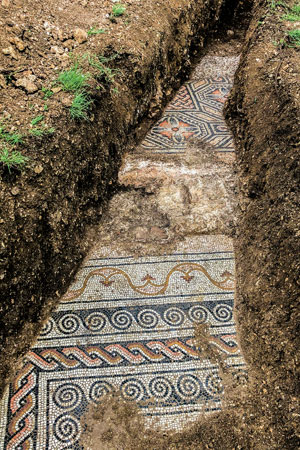
Since 1922, archaeologists have hunted for history in Valpolicella, Italy. Today the region is known for growing grapes, but signs of a centuries-old civilization were hidden underneath the vines. Archaeologists used radar to scan the ground for signs of underground relics while not harming the plants above. After identifying potential sites, they dug test trenches.
In late 2019, they unearthed a large mosaic floor that dates back to the third century. The floor is likely part of an ancient domus, a type of home owned by the wealthiest ancient Romans. Work was paused in the spring for both the harvest season and because of lockdowns related to Covid-19. Now that more of the floor has been uncovered, the team hopes to continue excavation and turn the area into an archaeological site open to the public.

